From August 2023 the comments on statistics, a short description of selected, recently issued statistical data in the area of monetary statistics and the non-residents sector statistics, are no longer published. They are replaced by Statistical releases.
Comments on monetary developments for December 2021
The growth in total liquid assets (M4) accelerated in 2021, with net foreign assets (NFA) strongly increasing, while the growth of net domestic assets (NDA) slowed down markedly.
The growth rate of total placements of monetary institutions to domestic sectors (except the central government) stood at the same level as at the end of 2020. The growth of placements to households accelerated, predominantly aided by the growth of housing loans, with general-purpose cash loans growing as well. Lacklustre growth of corporate placements continued.
Total liquid assets (M4[1]) increased in December by HRK1.8bn (0.4%, based on transactions), as a result of the growth in net domestic assets (NDA), while net foreign assets (NFA) of the monetary system decreased. In the NDA structure, placements to non-financial corporations increased the most, followed by net claims on the central government, whose increase was less pronounced. The NFA of the monetary system registered a usual seasonal decrease in December paired with a parallel change in structure. Thus, the strong growth of deposits of domestic banks in the TARGET2 system and foreign exchange deposits of the central government with the CNB substantially increased the NFA with the CNB and decreased the NFA of credit institutions.
The growth in total liquid assets accelerated in 2021 to 10.4% from 9.1% at the end of 2020 (Figure 1), which was a reflection of the strong growth in NFA and a noticeable slowdown in the growth of NDA on an annual level. The acceleration in the growth of NFA was aided by the increase in the surplus on the balance of payments current and capital account and the slowdown in NDA by the decrease in the central government’s need to borrow from monetary institutions. The annual growth in money (M1)[2] accelerated as well, reaching a very high level (18.0% in 2021 and 17.0% in 2020). The growth rate of quasi-money increased from 3.6% to 4.4% on an annual level, primarily due to the contribution of the growth in household and corporate foreign currency deposits (Table 3).
| Figure 1 Monetary aggregates annual rates of change based on transactions |
Figure 2 Placements annual rates of change based on transactions |
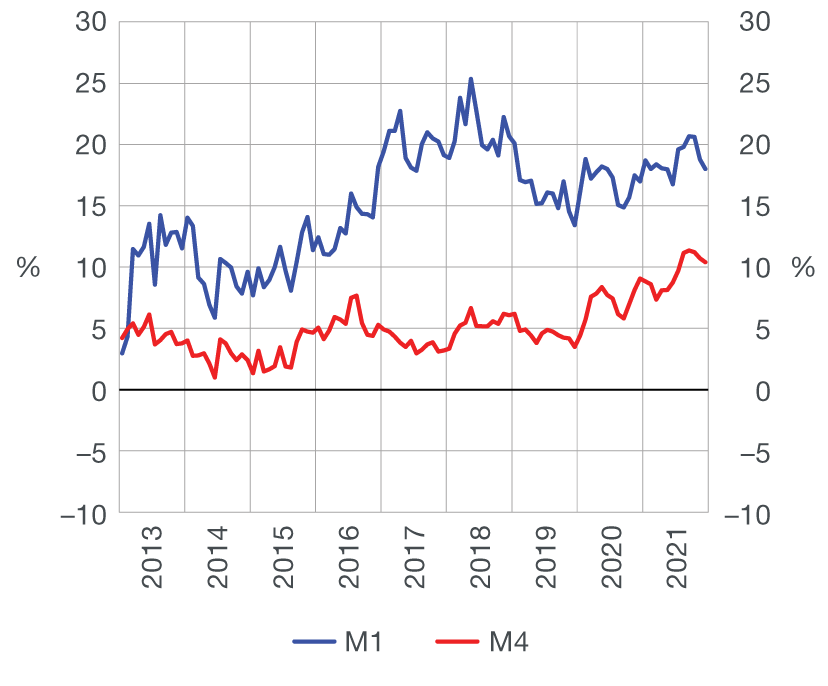 |
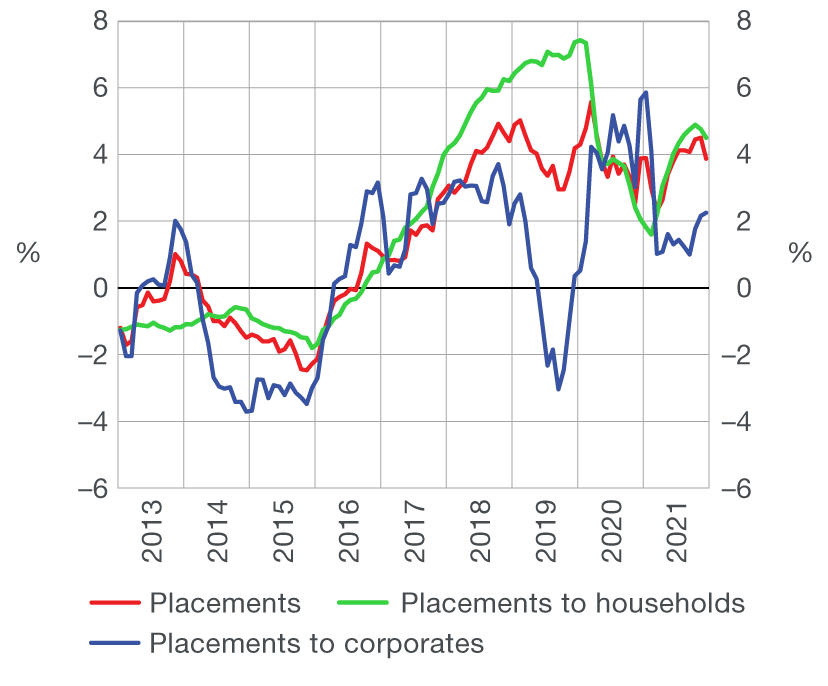 |
| Source: CNB. |
Total placements of monetary institutions to domestic sectors (excluding the central government) stood at HRK 245.8bn at the end of December 2021, up HRK 2.8bn or 1.1% (based on transactions) from the end of November (Figure 2). Loans, as the largest component, registered a monthly growth of HRK 1.7bn (0.7%), ending December at HRK 238.9bn (Table 2) and investments in bonds a monthly growth of HRK 1.1bn, of which almost the entire amount was accounted for by non-financial corporations. The growth of loans on a monthly level was primarily a result of the growth in loans to non-financial corporations (HRK 1.4bn or 1.6%), with loans to other domestic sectors increasing slightly as well (HRK 0.4bn or 3.6%). Loans to households, registered a slight decline of HRK 0.1bn (0.1%) in December 2021, for the first time since April 2020, which is associated with the reduction in the balance of bank overdrafts (HRK 0.3bn) and general-purpose cash loans (HRK 0.1bn), while housing loans continued to grow (HRK 0.3bn).
On an annual level, the growth of total placements totalled 3.9%, the same as at the end of 2020. Broken down by sector, household loans grew the most in 2021 (HRK 6.1bn), with their growth rate more than doubling, from 2.1% at the end of 2020 to 4.5% at the end of 2021. The growth of housing loans was particularly strong (HRK 5.7bn), accelerating from 7.5% to 9.2% and to a slightly lesser degree so was the growth of general-purpose cash loans, which after having decreased by 1.3% in 2020, grew by HRK 1.2bn last year, their growth rate reaching 2.3%. Loans to non-financial corporations, having increased by HRK 0.8bn in 2021, slowed down their annual growth from 6.0% in 2020 to 1.0% in 2021 (the growth rate in 2020 increased because non-financial corporations refinanced their external debt by borrowing from domestic credit institutions). At the same time, the bonds of non-financial corporations grew by 58.7% so total placements to corporates increased by 2.3%, noticeably less than in 2020, when they grew 5.6%.
Table 1 Summary consolidated balance sheet of monetary institutions
in billion HRK and %
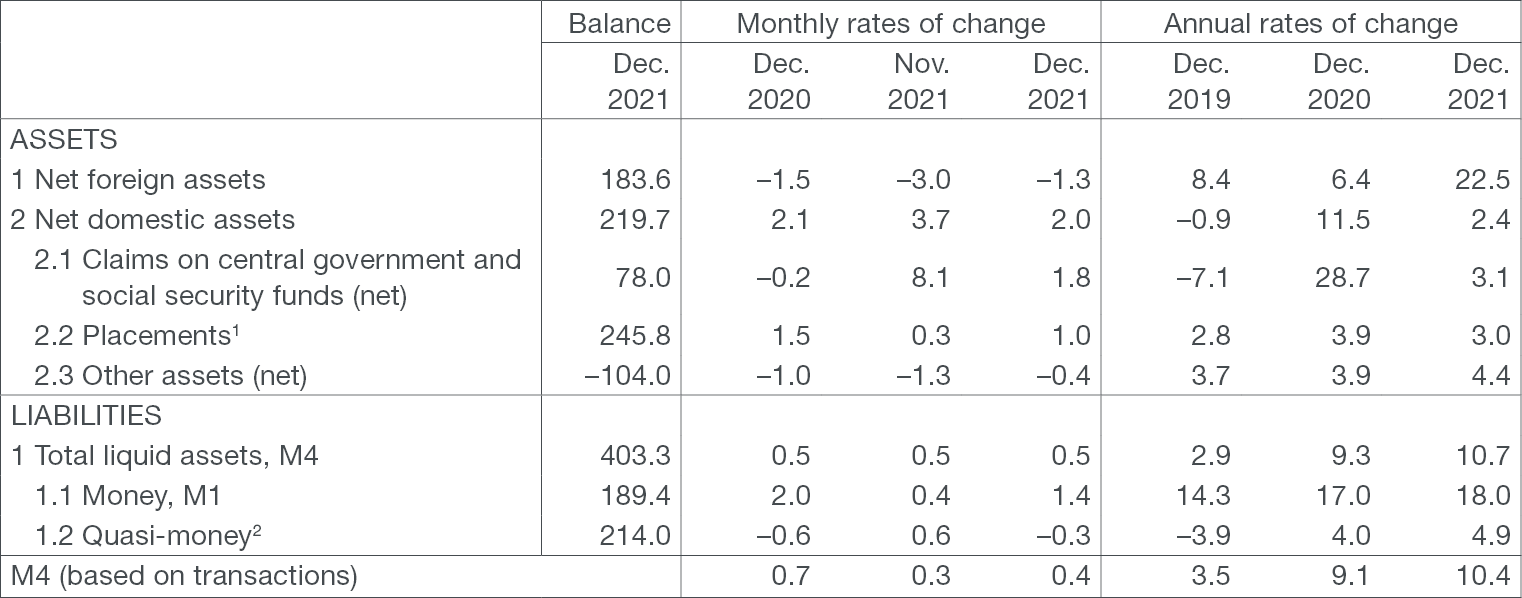
1The sum total of asset items 2.2 to 2.8 of Bulletin Table B1: Consolidated balance sheet of monetary financial institutions.
2The sum total of liability items 2 to 5 of Bulletin Table B1: Consolidated balance sheet of monetary financial institutions.
Source: CNB.
Table 2 Loans (except the central government) and main components
in billion HRK and %
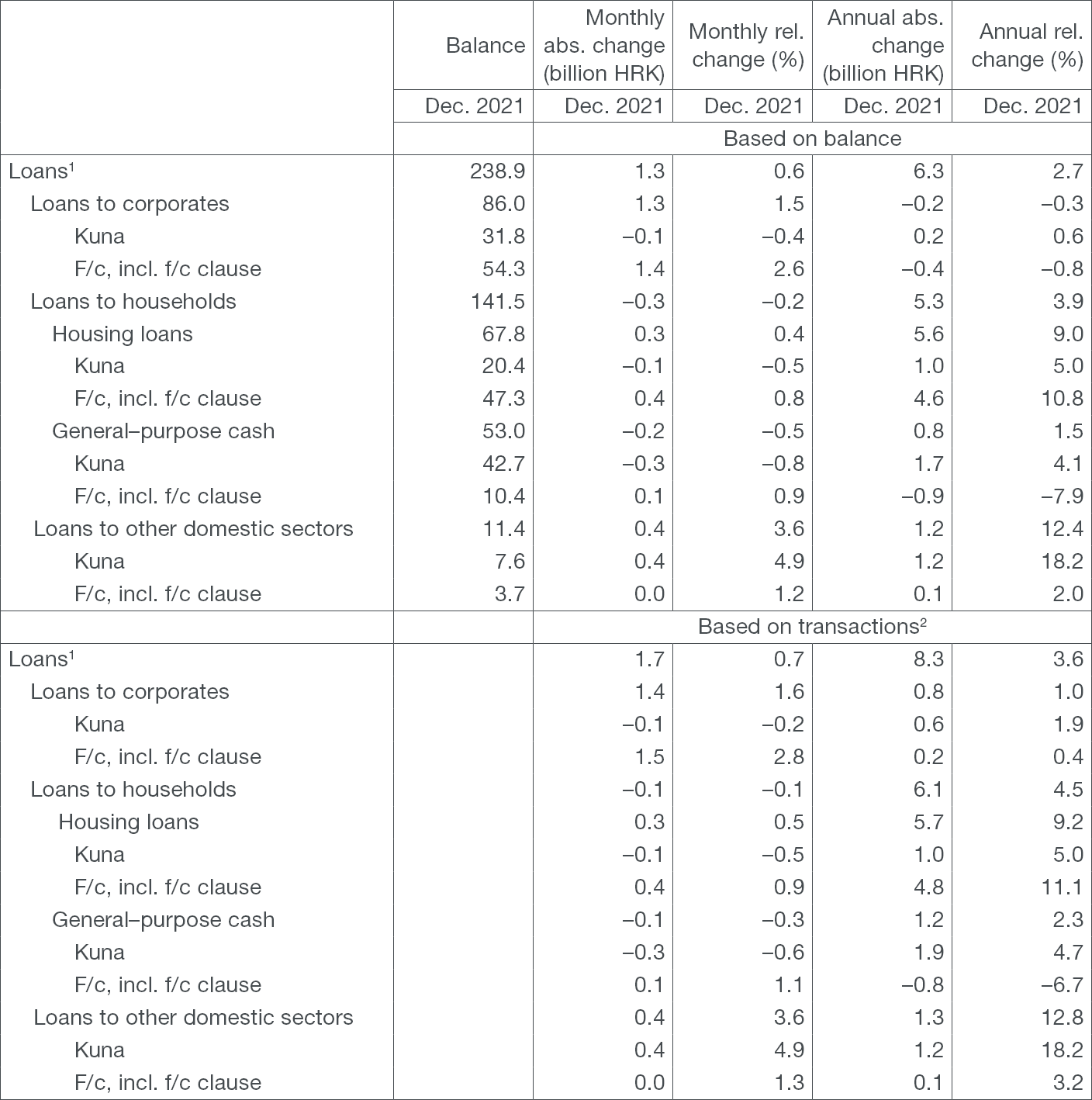
1In addition to loans to households and corporates, they also include loans to the local government and other financial institutions.
2The transactions show changes that exclude the effects of exchange rate changes, securities price adjustments, reclassification and write-off of placements, including the sale of loans in the amount of their value adjustment.
Source: CNB.
Table 3 Deposits (except the central government) and main components
in billion HRK and %
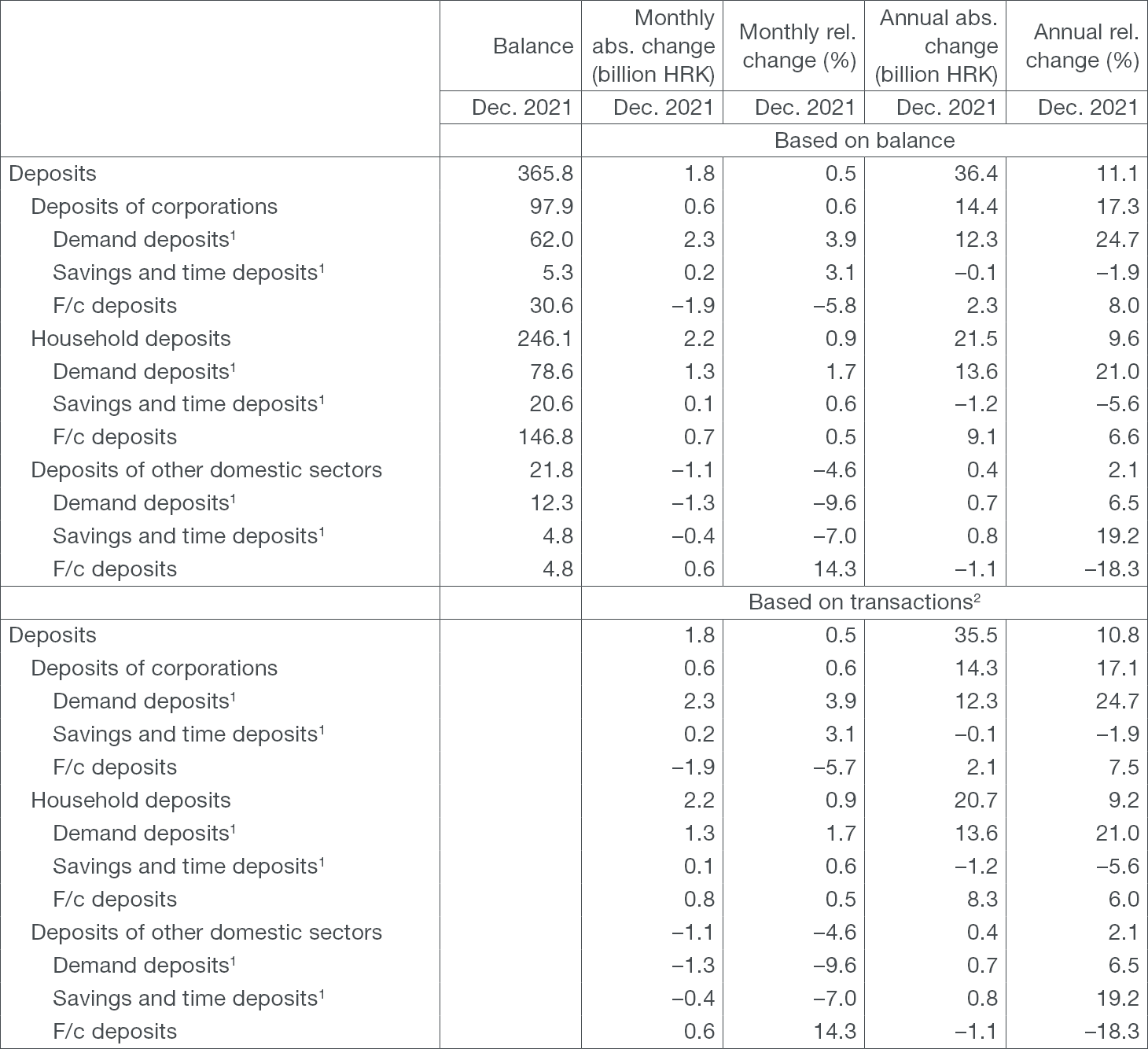
1Includes only kuna sources of funds of credit institutions.
2The transactions show changes that exclude the effects of exchange rate changes, securities price adjustments, reclassification and write-off of placements, including the sale of loans in the amount of their value adjustment.
Source: CNB.
For detailed information on monetary statistics as at December 2021, see:
Central bank (CNB)
Other monetary financial institutions
